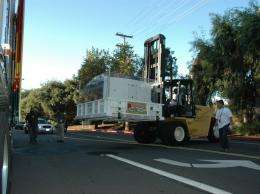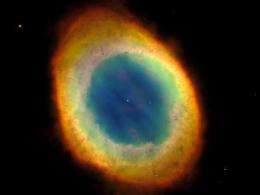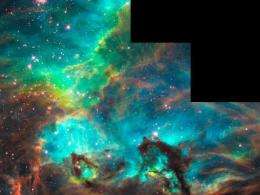Camera that saved Hubble leaves nest for good

The historic Wide Field and Planetary Camera 2, developed and built by the Jet Propulsion Laboratory for NASA's Hubble Space Telescope, left JPL Wednesday morning, Oct. 13, for points east. Known informally as "The Camera That Saved Hubble," the baby-grand-piano-sized camera was on temporary loan from the Smithsonian Air and Space Museum in Washington.
During its stay at JPL, the historic camera was a popular attraction for groups of school children and other visitors, including thousands of people who attended JPL's annual Open House in May.

Next stop for the camera: It will be on display for a short time at the Denver Museum of Nature and Science in Colorado, and then it will return to the Smithsonian Air and Space Museum in Washington, where it will go on permanent display. The Wide Field and Planetary Camera 2 was the workhorse camera on Hubble after being added to the observatory in December 1993 to correct an imaging problem created by the telescope's faulty primary mirror.

During its tenure aboard Hubble, the camera produced many of the mission's most stunning deep space images. Its high-image resolution and quality are some of the reasons the camera became the space telescope's most requested instrument during its operational lifetime. Logging 15 years aboard the observatory, the Wide Field and Planetary Camera 2 was Hubble's longest-serving instrument.
Space-walking astronauts retrieved the camera during the final Hubble servicing mission in May 2009.
Provided by JPL/NASA




















